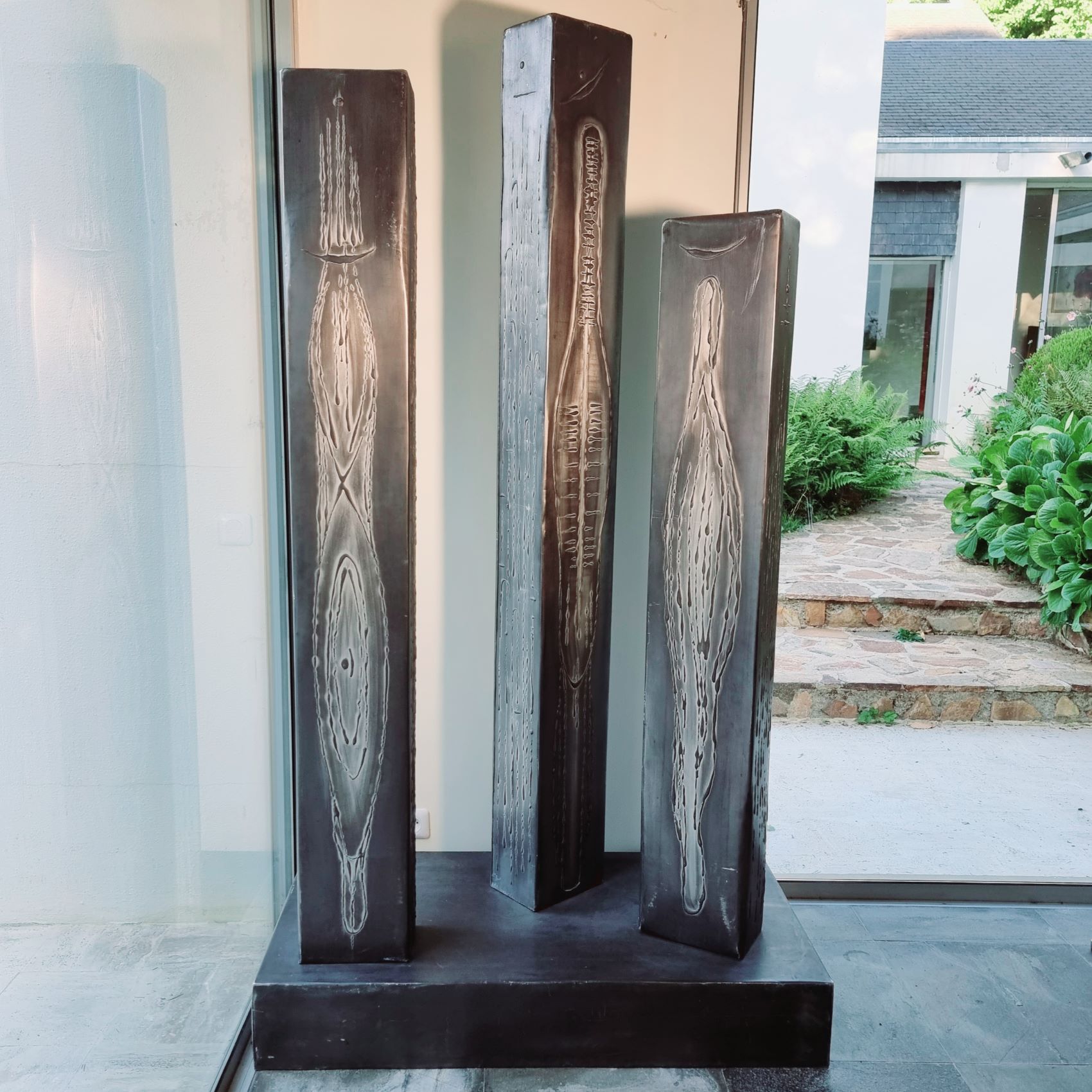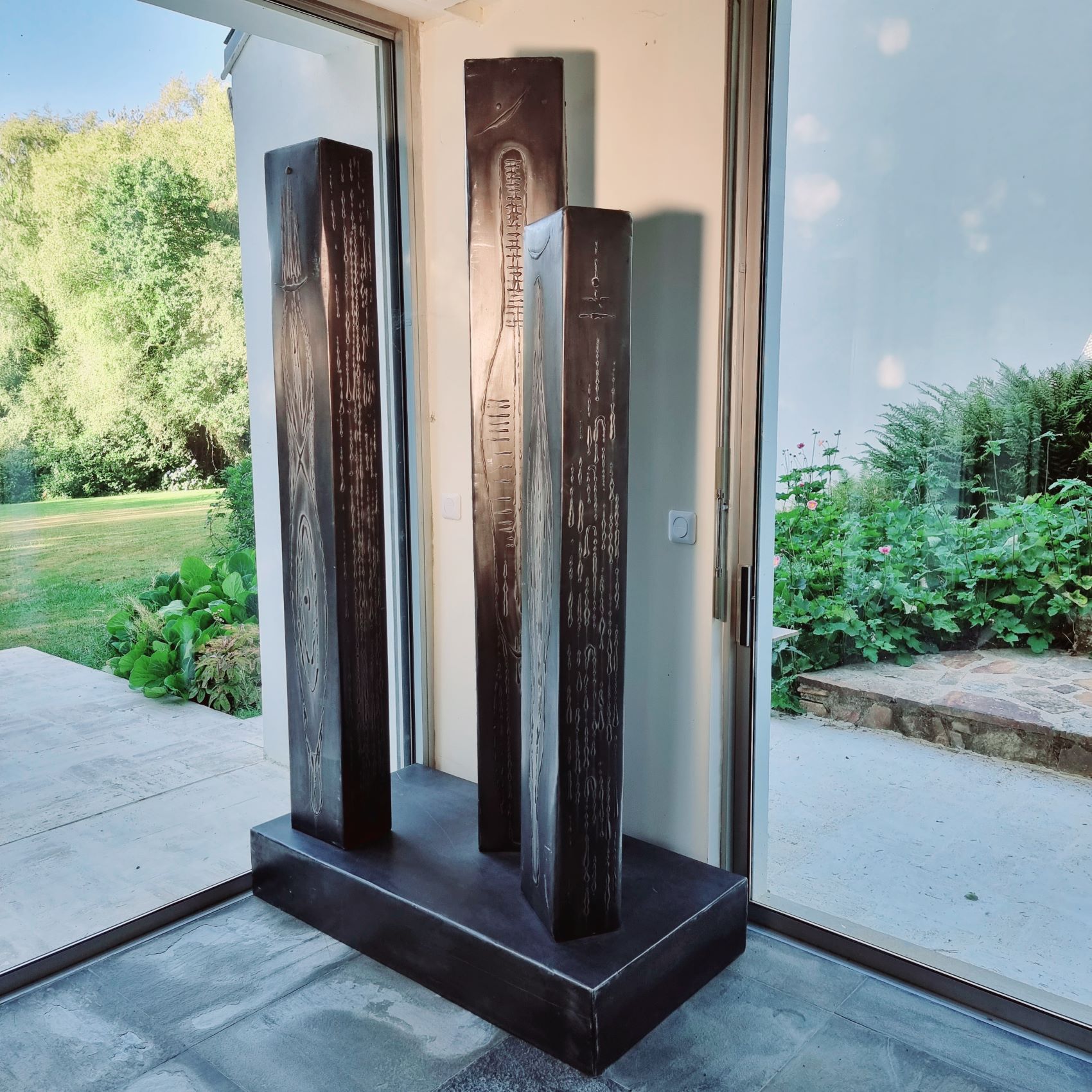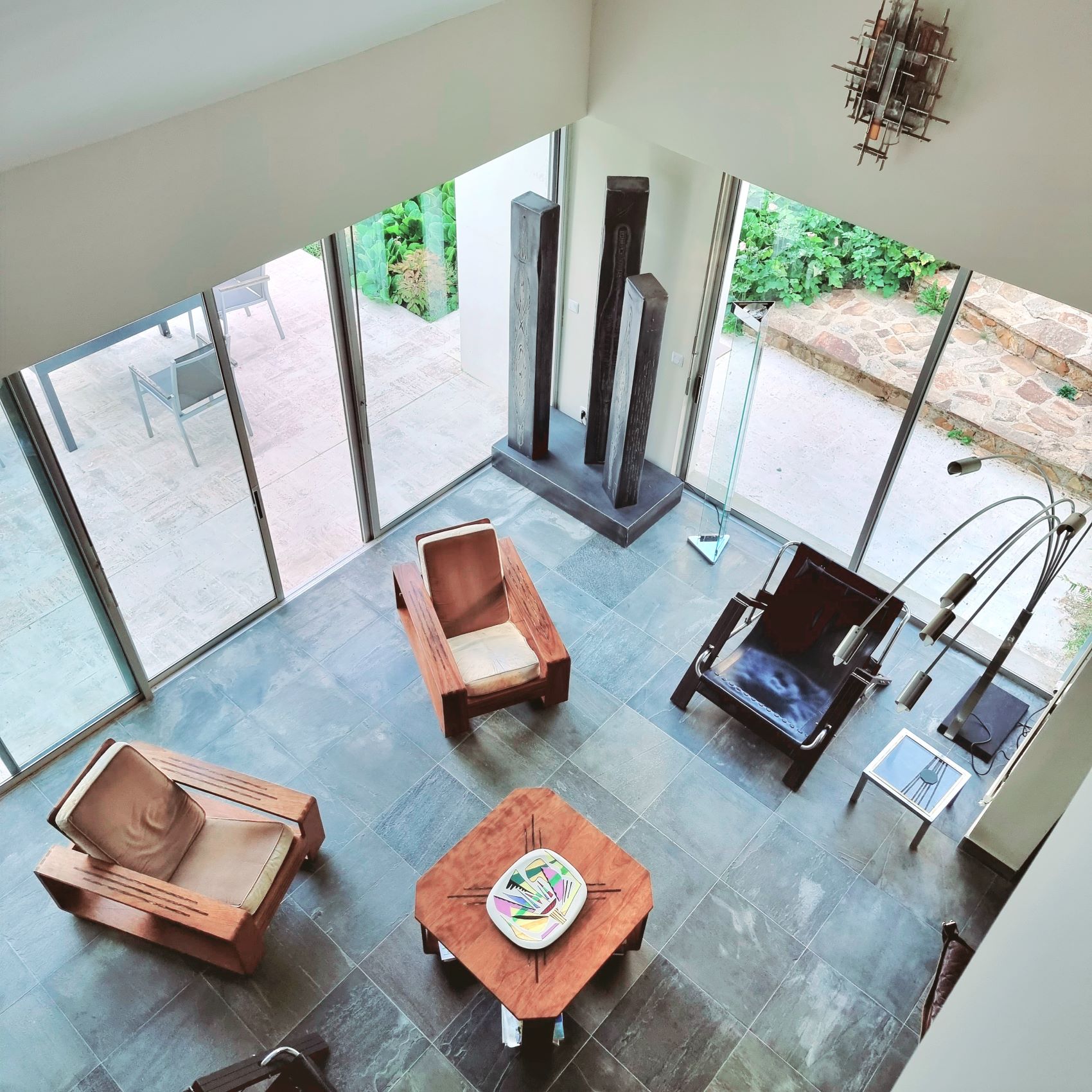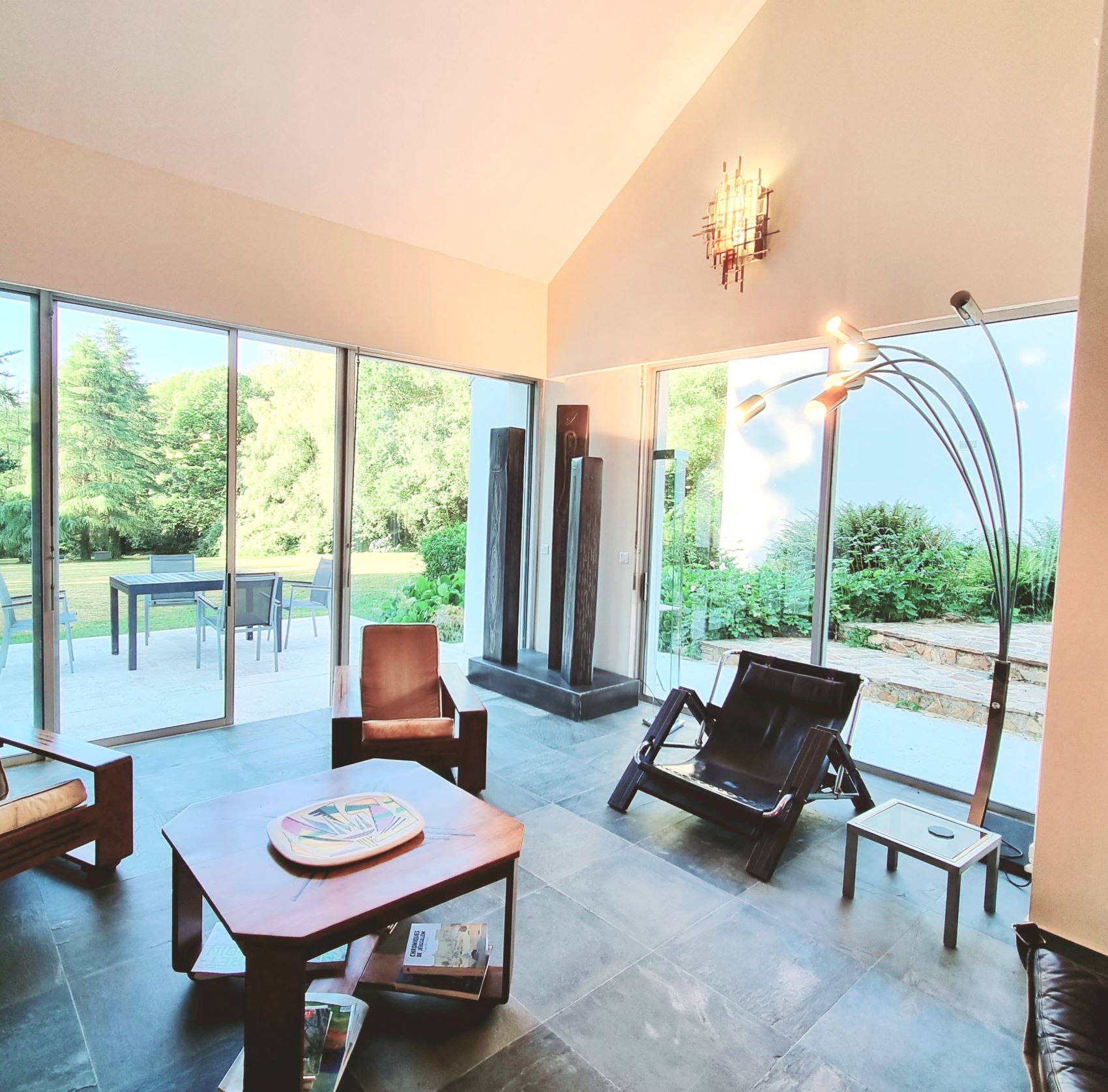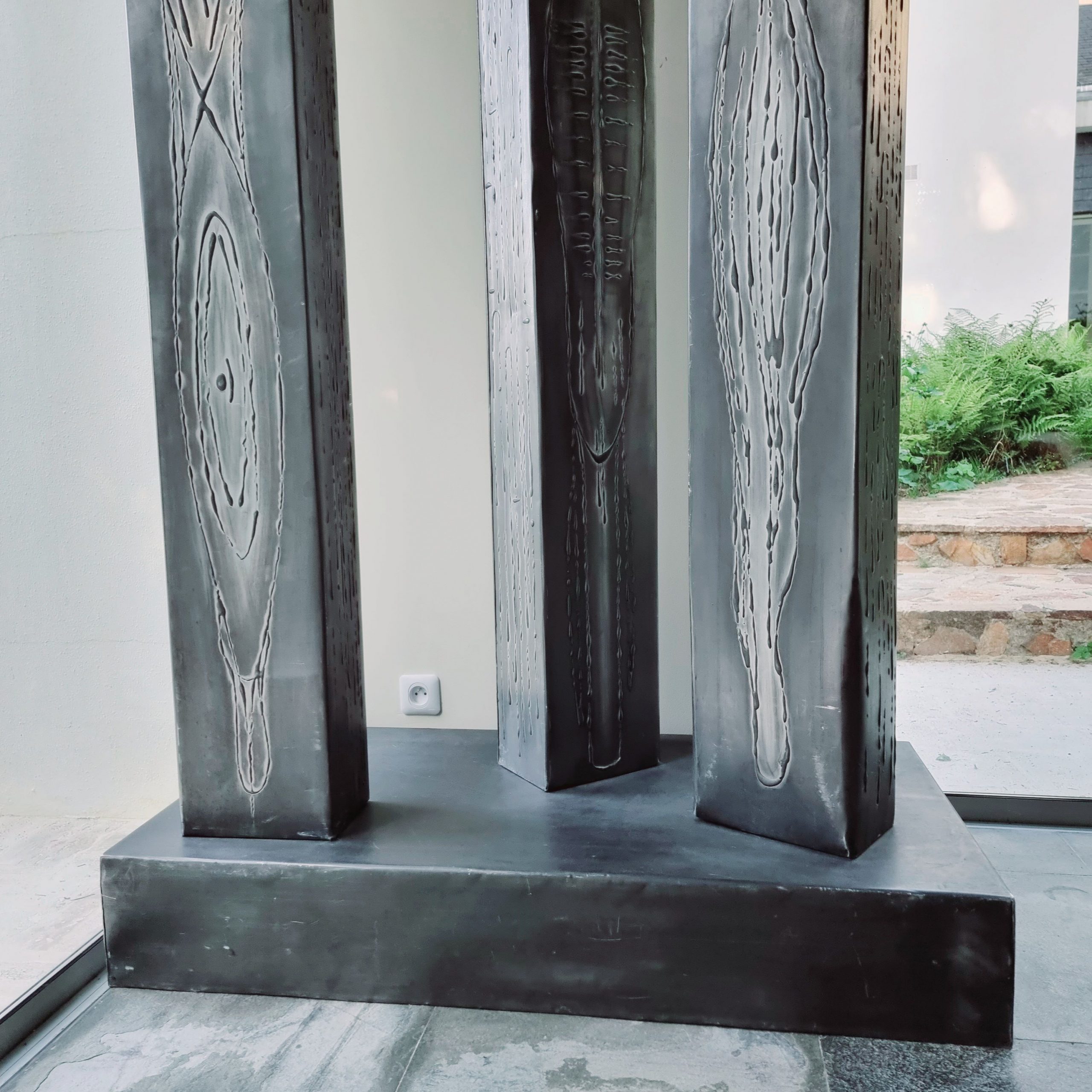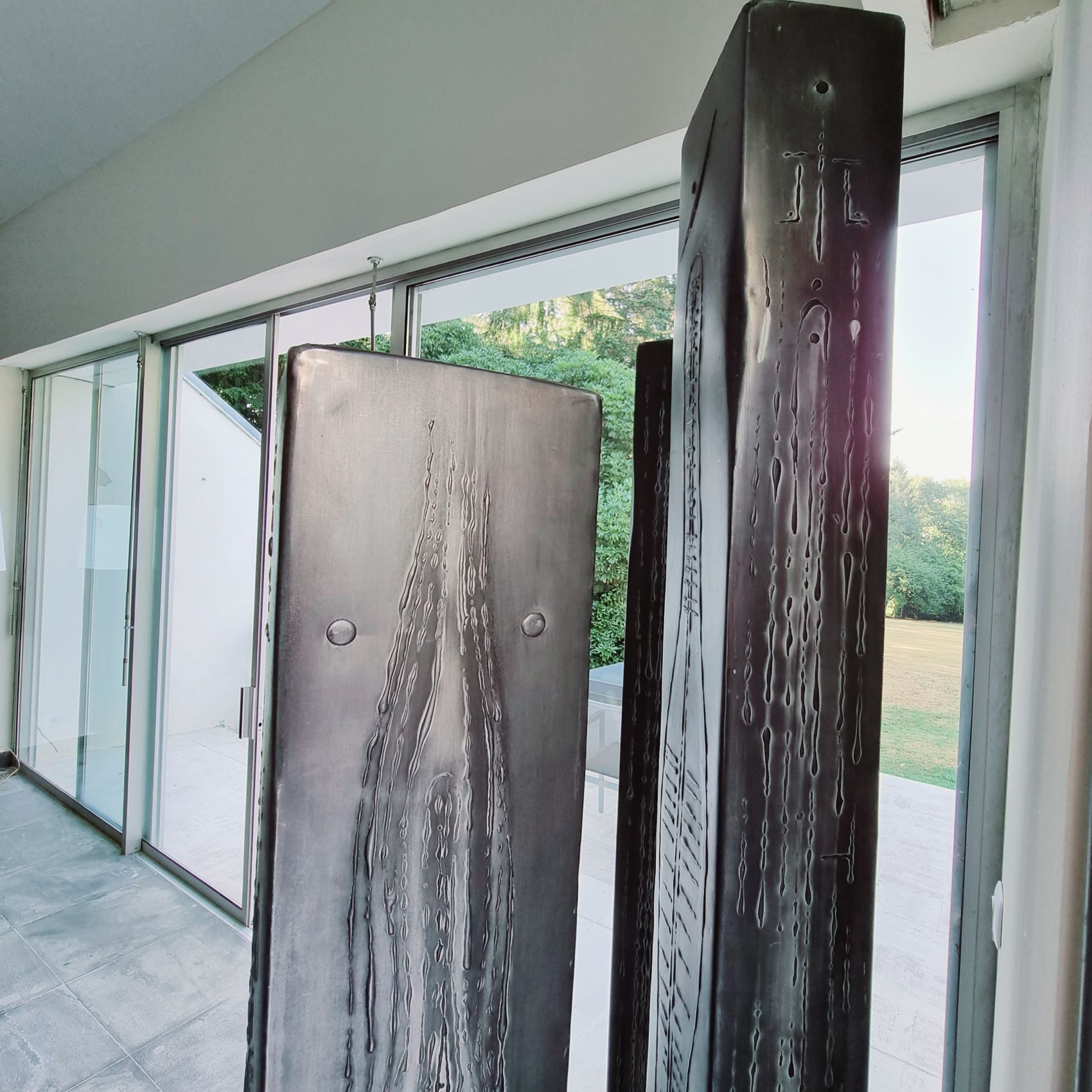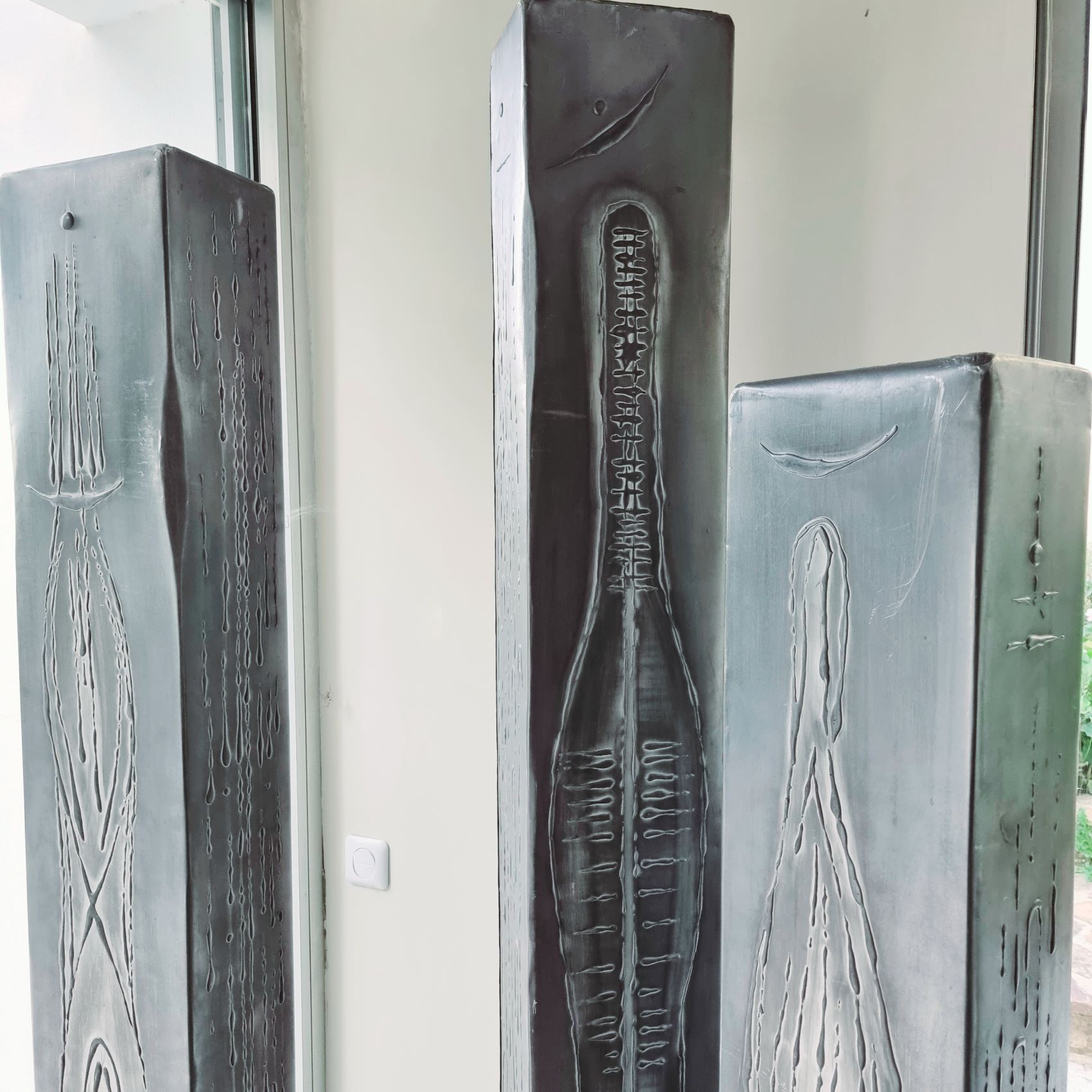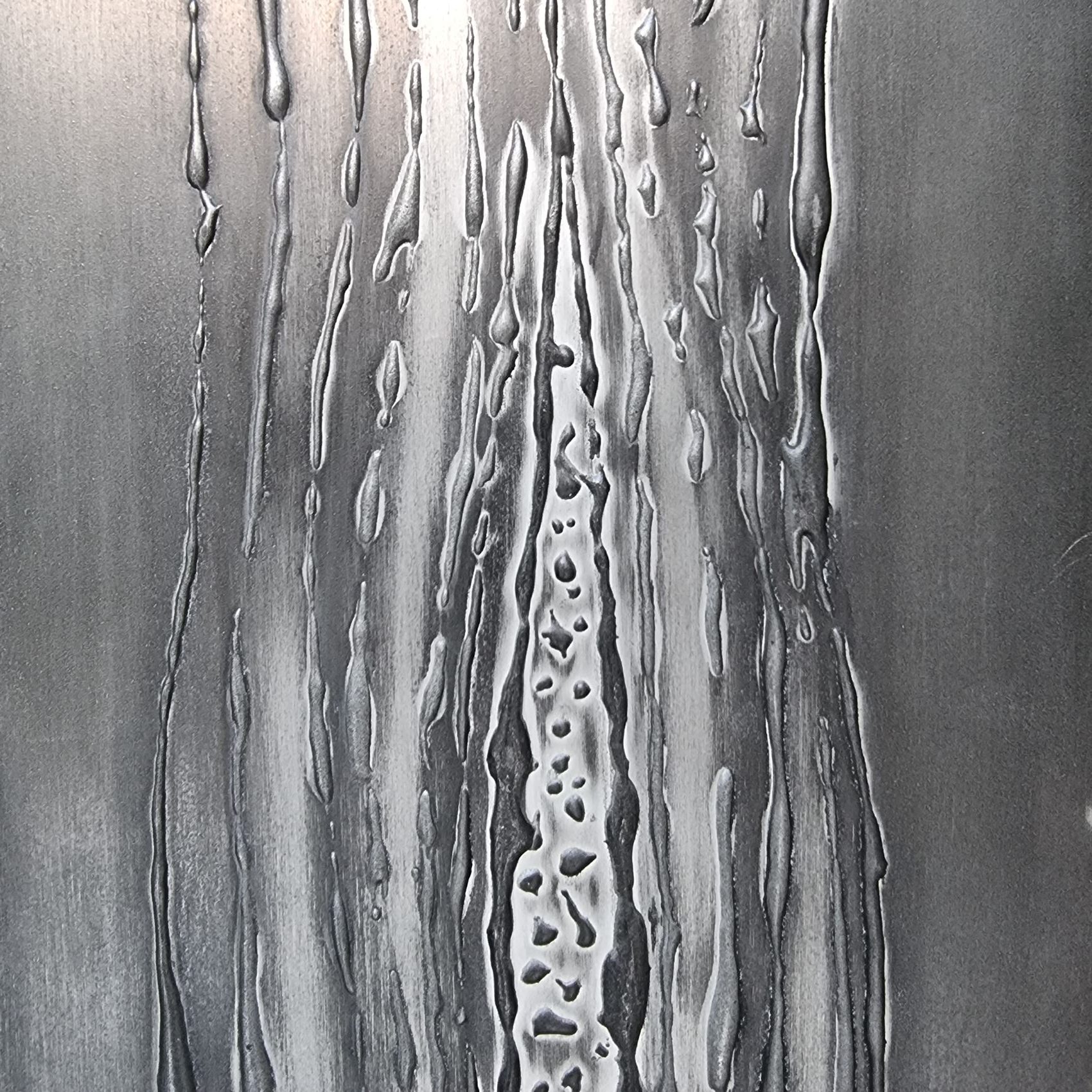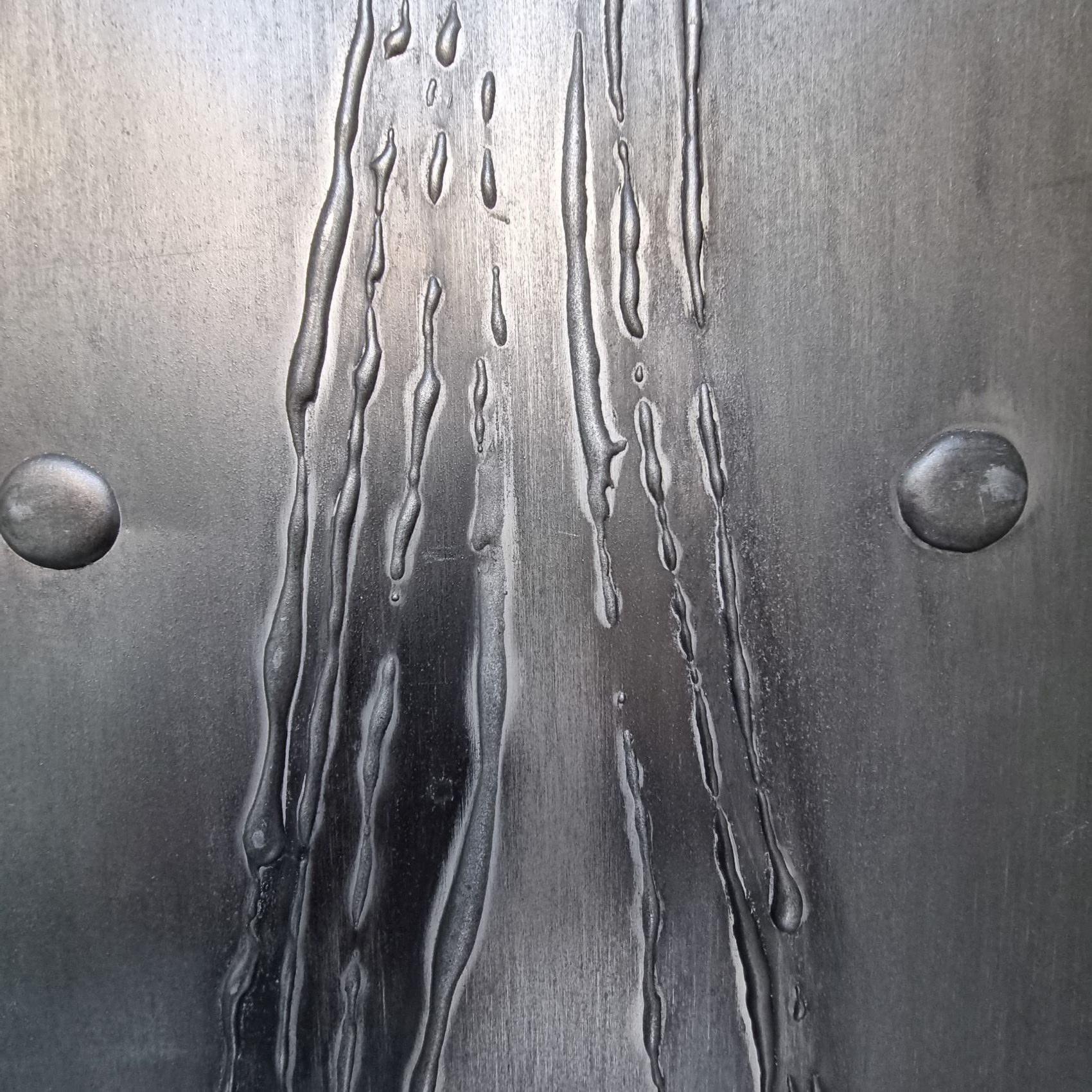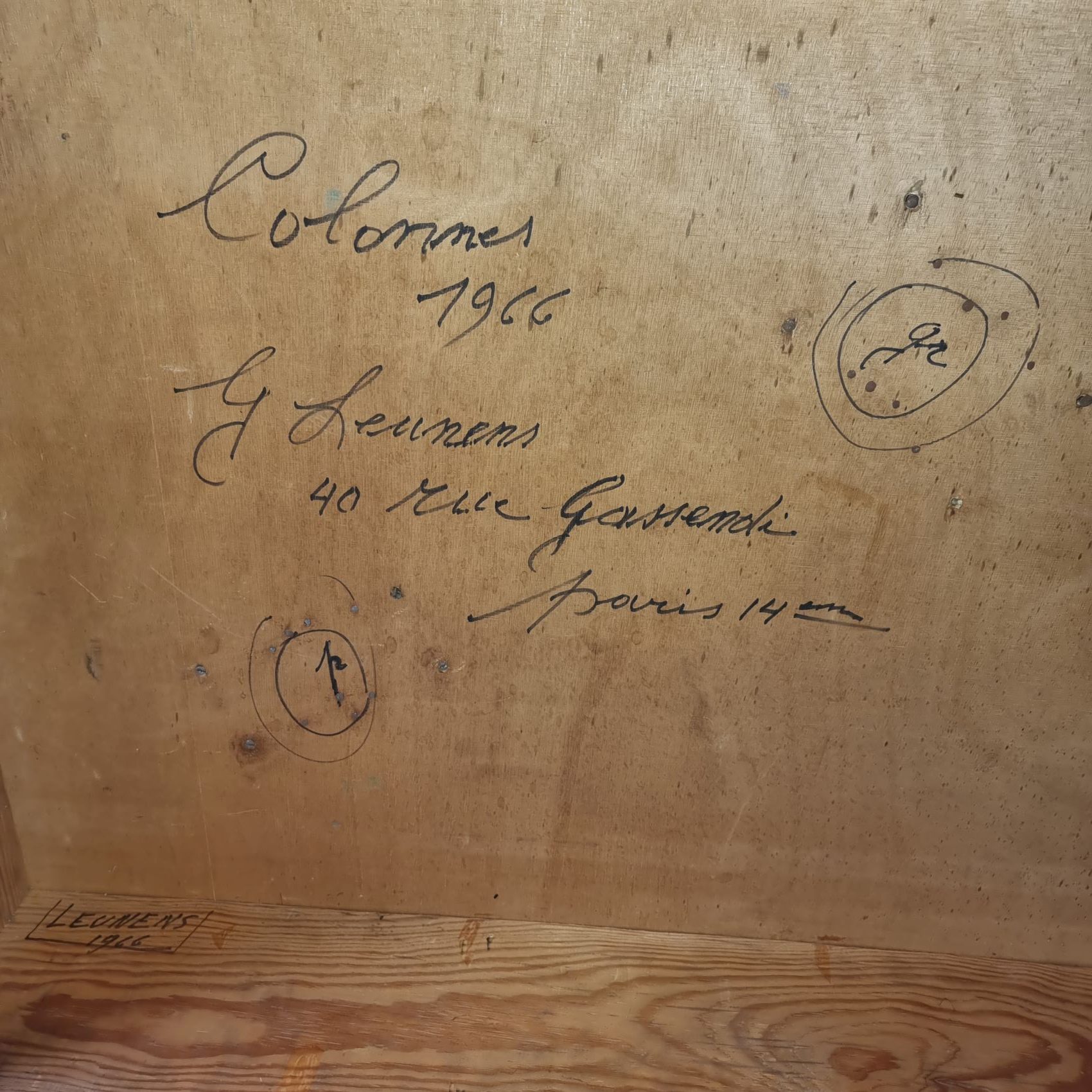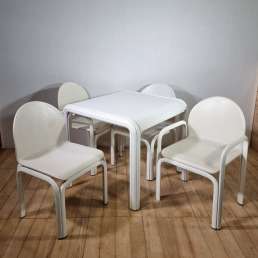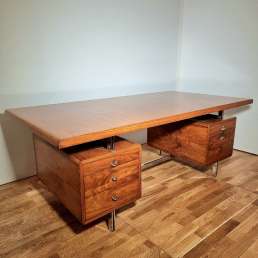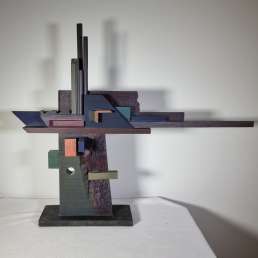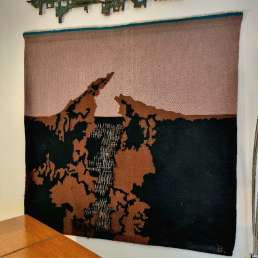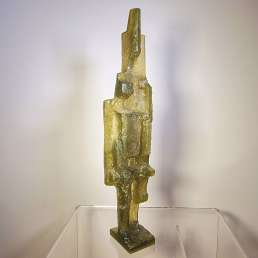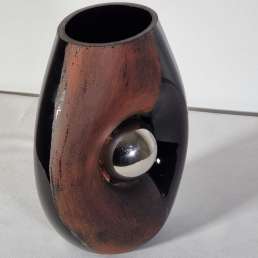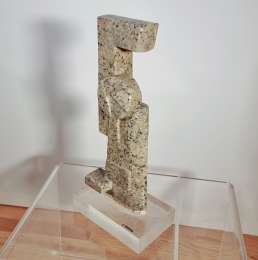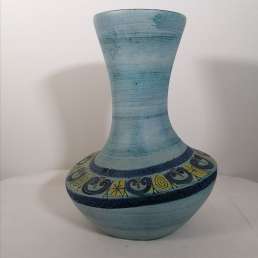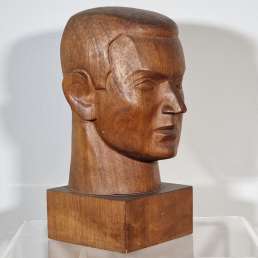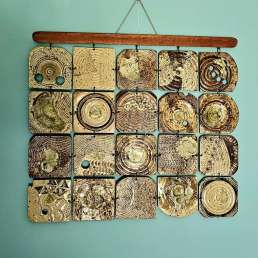Guillaume LEUNENS, Columns, métal, 1966
Description
What I like
love the unique piece aspect of this sculpture, very impressive in its format magnifying these three square columns: it plays in space like geometric elements assembled together, but there is also this decoration when you look more closely.
With a secret technique that only Guillaume Leunens knew, signs are born, in which you can see great characters if you want. But the fact that the sculpture is only titled “Columns” questions us about what we see in these light signatures: are we not rather in abstraction, with references to the stars in the infinitely large, or to cells in the infinitely small?
In any case, we are in a work that questions, which is characteristic of great artists.
I like the fact that this monumental sculpture was created in 1966 and is typical of the artistic research of the period.
Technical description
Guillaume LEUNENS (1914-1990)
Columns, 1966
Sculpture formed by three square-section columns of different heights, on a rectangular plinth.
Wood cores covered with metal, presumably aluminum. Or maybe zinc
Titled, dated, signed and located 40, rue Gassendi Paris 14th under the plinth, on the wooden core.
Dimensions and weight
Height: 215 cm- Width: 120 cm- Depth: 62 cm- Weight: 30 kg
Mix & Match
This is a unique work of art, which requires a certain space, because it is monumental: it will enter a large room with high ceilings, but also under a veranda.
To echo it, you will need strong furniture, also of rather imposing size. I am of course thinking of the red Space Age seats from the 1970s (REF), but why not associate them with the whiteness of Gae Aulenti’s living room? (REF). It can also be placed in a large office next to the Banque de France (REF) management office, with its clean design.
I can clearly see the pair of Vanessa’Angelo Brotto floor lamps in white lacquered metal and colored Murano glass verrines, lighting up this mat metal. Roundness versus squares, whiteness versus mat gray: what a beautiful balance to create?
In stock
Description
To know more
The artist
Self-taught, born in Belgium in 1914, placed in an orphanage with his brothers and sisters, he worked in metal at a very young age. He was very marked by the war of 1939 during which, as a prisoner, he worked in a foundry. Although mostly self-taught, he takes evening classes at the Ecole des Beaux-Arts in Brussels.
He exhibits a few times a year in artist clubs. In one of his exhibitions, he meets Magritte, with whom he befriends for a few years. He likes to experiment, from figurative to abstract to surrealism. Among his influences are Permeke, Breughel, Picasso and Van Gogh. The reviews are rave and Leunens is in demand in art galleries. Starting out from Flemish expressionism, he evolved into abstract art and his meeting with Servranckx allowed him to discover his own path.
He obtained a scholarship from the Belgian government in 1957 to study Spanish artistic techniques in Majorca. He then met a wealthy French bourgeois whom he married after the divorce of his first marriage. Thanks to his new wife, he devotes all of his time to art.
In 1958, Guillaume Leunens broke away from the vision of nature. We then notice him grasping the very essence of the absence of light. In many experiments done using paint, heated iron and aluminum, glass or copper and even with ingredients like ink, wax, crushed coffee beans, he smears dark surfaces and yet vibrant, whose dark aspect is made even more enigmatic by light lines or colored dots. In his best productions, Guillaume Leunens already manages to evoke his fascination with the total night.
In 1960, he began to work on metal, being convinced that our time requires specific pictorial means. He then transposes his paintings onto metal, a material he has known since his youth. Aluminum plates receive its primitive geometric shapes, circles, distended squares, crooked rectangles, diagonals, parallel lines, transversals, squares, perspective trapezoids, truncated and shortened cones. They reveal a poetic essence; despite the seemingly dry geometry, they give prosaic aluminum a heavy dose of human warmth.
Metal and fire, introduced by his early worker trades, influenced the originality of Leunens’s work. It seems logical that the choice of this material prompted him to participate in the new research of iron sculptors. However, his orientation was quite different because, when he began his experiments, Leunens was already a painter. If he wishes to abandon the traditional means of painting which he considers, for him, obsolete, he nevertheless attaches to respect for pictorial expression while developing new techniques which, in his opinion, would adapt better to the modern style.
Guillaume Leunens began his experiments with metal in the 1960s. He used a large aluminum sheet stretched over a wooden frame as a backdrop. He uses several methods to successfully paint with metal on aluminum. He probably found his technique while working in the foundries for the Germans. The result is spectacular, among his finest works. He also creates plinth and wall sculptures with the same technique. He even succeeds in making metal works on canvas and metal on paper.
The techniques of metal on paper and metal on canvas are his best-kept secrets, which he has never shared. In his workshop when he works, no one is tolerated. He enjoys painting the woman, mother and child as well as conception, possibly due to his youth without his mother. He is also obsessed with space and everything that goes with it. He has an avant-garde vision. He is known as the painter of night and space.
After participating in the Montreal World’s Fair in 1967, while exhibiting in New York, two professors from Harvard University asked him if he could, with his metal on aluminum technique, produce two works representing healthy cells. and cancerous using slides. He created two large works, one for each type of cell for the teachers who were greatly impressed by the resemblance of Leunens’ works to real cells.
In the mid-1970s, he began to use another technique on his aluminum works: monotypes which reveal the harmony of lines. Leunens also uses this technique on paper demonstrating the artist’s versatility. The “monotypes” are the surprising and fascinating result of a new, very personal technique: the painter’s hands of Leunens forced the metal (aluminum) to behave like an oil color. The name “monotypes”, wrongly given, according to some, suggests a link with graphic art that is totally absent. In Leunens’s work the paintings are undoubtedly abstract and another name should be used.
A relentless worker, Guillaume Leunens paints a work for days and then, when the work is finished, he looks at it and if he does not find it up to the task, destroys it and starts over again or quite simply invents another technique. His determination, his patience, but above all his passion for his art and his vision of the universe are the main qualities that allowed Guillaume Leunens to reach the end of his dream.
He always fought for his art by pushing his own limits, he always wanted to do better. He was in the forefront during his lifetime and still is today. He took all his secrets with him. On his deathbed he said, “My son, many have tried to imitate me but no one has ever succeeded. There are still some who will try but they will not succeed. “His works will continue to stir in us all the emotions that this being passionate about life and night has been able to breathe into his art.
His inspiration was nourished by the experiences of the worker-artist in Belgian Brabant. He was fascinated by fire and metal, by day, in the factory; at night, these images pursued him during his creative endeavors. At this point, man’s mastery of the material finally pushed him to artistic triumph.
Contacted in 1996 by the de Leunens family, members of Artmetal, an international group of artists working in metal based in Washington, were impressed by the works of Guillaume Leunens. Without welding or embossing, Artmetal members wonder how Leunens applies metal to aluminum. The president then invites the family to bring works to their Washington convention which takes place a few months later. In the meantime, everyone gives their ideas on Guillaume Leunens’ technique. Dr Mark Parmenter, a metallurgical engineer at NASA, even claims that he will figure out the technique in less than 15 minutes if he can see and touch the works. The family therefore brings 6 works to the convention and after three days, no assumption has been made.
Later, Artmetal members continue the experiments individually to try and replicate the same technique. After two years of research, they still haven’t found Guillaume Leunens’s technique. The general hypothesis suggests that he learned his technique while imprisoned in German labor camps during World War II. Probably an ancient technique that would have been lost after Leunens’ death.
Two publications: “Guillaume Leunens” by M.van Jole and “Leunens, painter of life” by Xavier Franc, tell us about his work.
The editor
This is a unique work, created entirely by the artist, without editing.
A beautiful authentic sculpture at a fair price
This sculpture has been carefully selected for its aesthetic qualities, its originality and its fair price. Our choice gives priority above all to the sharpness of design, a pledge of enhancing your new acquisition in your interior and an ability to interact with your furniture, to match and blend to create a unique decoration.
Buying a vintage piece of art is surely a reasonable investment, so great is the appetite for the 1960s and 1970s.
Finally, buying a vintage work preserves the resources of planet earth.
Additional information
| Weight | 30 kg |
|---|---|
| Dimensions | 62 × 120 × 215 cm |
| Créateur | |
| Epoque | |
| Matières |


